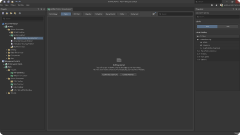- Introduction unread
- Calculation and searching for an operating point unread
- Thermal stability unread
- Amplifying properties. Frequency characteristics unread
- Real electronic component unread
- Global Features. Gain modification unread
- Self-oscillator. Measurements tool unread
- Sensitivity calculation unread
PCB Development Path
Each new project includes a new solution, new details, and new compromises to which the engineer MUST pay attention. In order to get the results closer to the ideal, the designer of the future device must make proper calculations, imagine the consequences of decisions made, compare different device configurations and, finally, make the right choice. Altium Designer offers a complete set of tools allowing the engineer to follow the PCB development path without leaving the design environment and without resorting to third-party programs. From the beginning of the project to its completion, the designer must perform many operations related to each particular stage of the development path. From these stages, as from the blocks, a typical design path is built.
The development path of every PCB always starts with creating a new project in which the design of the schematic and board will be carried out and synchronized. At this point, it is assumed that a library is created and placed in your repository. In this guide, you will use the existing library of managed components. After the project is created, work starts on the electrical schematic design on which the components are placed and their interconnections are defined. The Electrical Rules Check (ERC) design rules will be checked several times while working on the schematic, and once completed, the project will be compiled. The next step contains all the work related to PCB design. This step includes forming the board shape, creating a layer set (stackup), synchronizing with the schematic, design rules definition, components placement, routing, and much more. During PCB design, all rules such as Design For Assembly (DFA), Design Rules Check (DRC), and Design For Manufacture (DFM) are checked online, all of which help decrease errors and problems. After the PCB is completely designed and error-free, the documentation development stage begins including exporting the Bill Of Materials (BOM) exporting, creating assembly drawings, etc. The final step of the PCB development path is uploading files for the manufacturer to create a printed circuit board that will be used to create a finished device. These are the steps necessary in a typical PCB development path.



